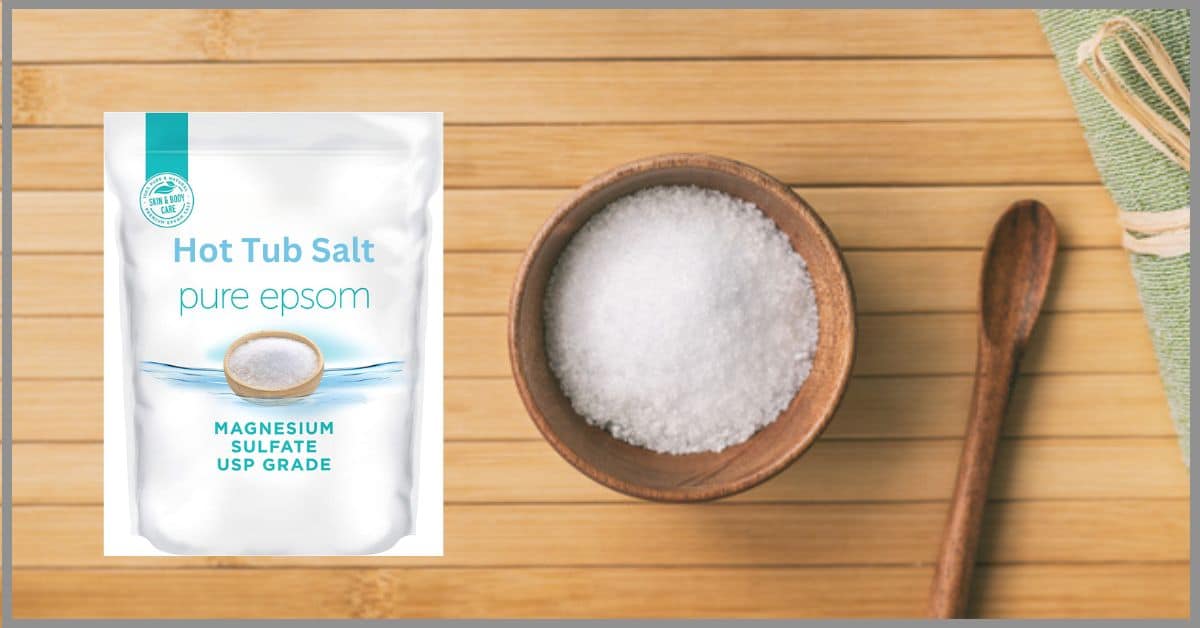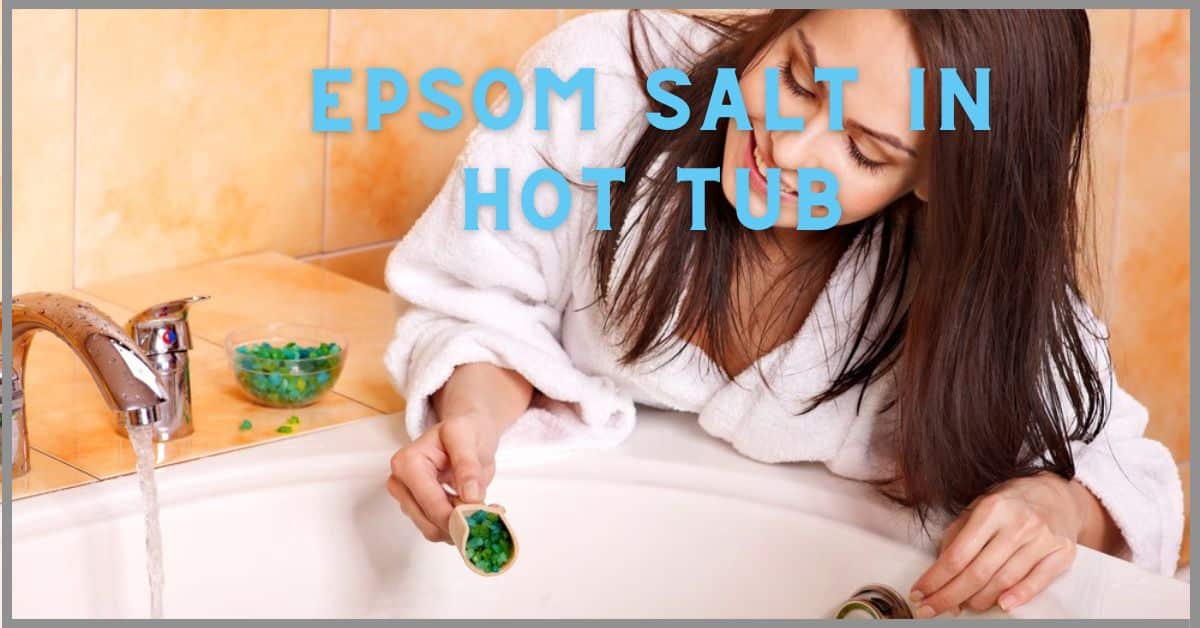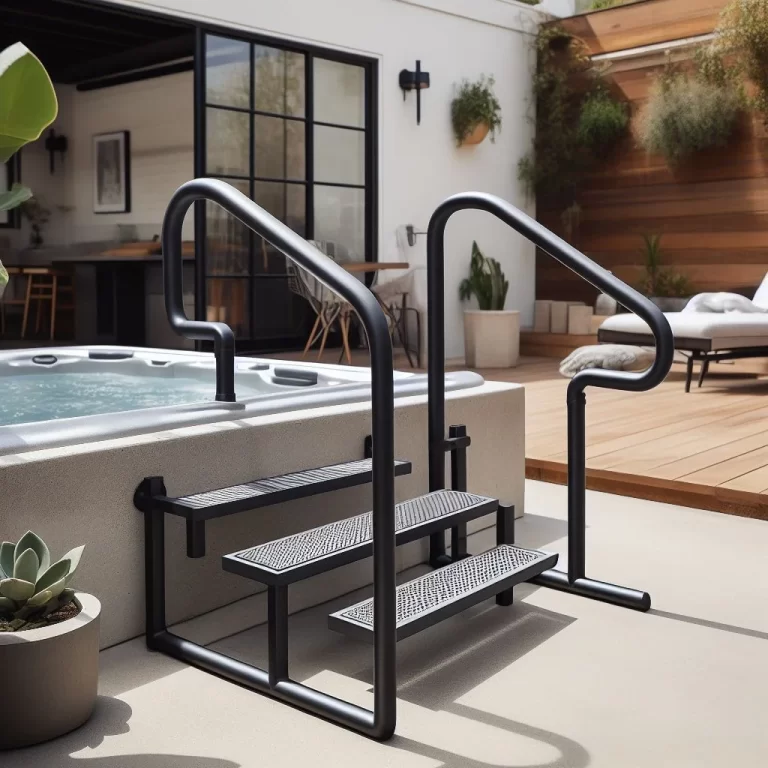Can You Put Epsom Salt in Your Hot Tub: 5 Surprising Benefits
Epsom salt, known for soothing sore muscles and stress in a bathtub, sounds tempting for a hot tub soak. But is it safe? The purpose of this guide is to uncover if Epsom salts can be utilized, highlight its advantages and disadvantages, and recommend superior alternatives for a spa-like experience without the hassle.
Epsom salt might tempt you with its bath-time benefits, but it’s not recommended for hot tubs. The dangers to your equipment, water quality, and skin outweigh any advantages. Select hot tub-friendly alternatives like spa salts or essential oils, and maintain your hot tub for a worry-free soak.
What Is Epsom Salt?
Epsom salt, or magnesium sulfate, is a mineral compound of magnesium, sulfur, and oxygen. It’s a go-to remedy for:
- Easing muscle aches
- Reducing stress
- Softening skin
While it shines in traditional baths, adding it to your hot tub is a different story. Let’s see why.

Can You Put Epsom Salt in Your Hot Tub?
Short Answer: No, it’s not recommended.
Here’s why Epsom salt and hot tubs don’t mix:
- Water Chemistry Chaos: It lowers pH and alkalinity, weakening sanitizers and risking corrosion.
- Equipment Damage: High total dissolved solids (TDS) cause scale buildup and cloudy water.
- Skin Concerns: Overuse might dry out or irritate your skin.
Instead, stick to hot tub-safe products like spa salts or aromatherapy crystals.
5 Surprising Benefits (For Baths, Not Hot Tubs)
While Epsom salt isn’t ideal for hot tubs, it offers perks in a regular bath:
- Muscle Relaxation: Magnesium eases tension and soreness after a tough day.
- Stress Relief: Warm water plus Epsom salt melts stress away.
- Better Sleep: Relaxation can prep you for a deeper snooze.
- Detox Boost: Some claim it pulls toxins through the skin (though science is shaky here).
- Skin Glow: Exfoliates and softens for healthier-looking skin.
Tip: Save these benefits for your bathtub, not your hot tub!
Why Do People Try Epsom Salt in Hot Tubs?
Some hot tub enthusiasts experiment with Epsom salt for its rumored anti-inflammatory and detox effects. But there’s little evidence to back this up—and the risks (like equipment damage) outweigh any perks. Safer options exist, so why gamble?
Safer Alternatives for Your Hot Tub
Want relaxation without the risks? Try these:
- Spa Salts: Formulated for hot tubs, they maintain water balance.
- Aromatherapy Crystals: Add scent and calm without mess.
- Baking Soda: Softens water and balances pH (1 tbsp per 100 gallons).
- Dead Sea Salt: Mineral-rich and gentler on equipment (2 cups per 100 gallons).
- Essential Oils: A few drops of lavender or eucalyptus elevate the vibe.
Pro Tip: Always verify compatibility with your hot tub manual.

How Much Epsom Salt Could You Use (If You Insist)?
If you’re set on trying it:
- Amount: 1-2 cups per 100 gallons of water.
- Precautions: Test pH and alkalinity after adding, and use sparingly.
- Reality Check: Even small amounts risk damage, so proceed with caution—or skip it entirely.
Risks of Using Epsom Salt in Hot Tubs
Beyond equipment woes, watch for:
- Corrosion: Metal parts like jets and fixtures suffer.
- Skin Irritation: High doses might cause dryness or reactions.
- Water Imbalance: Throws off pH, alkalinity, and sanitizer levels.
Play it safe and avoid the headache.
Hot Tub Maintenance Tips
Keep your hot tub thriving with these essentials:
- Test Water Weekly: Check pH, alkalinity, and sanitizer levels.
- Clean Filters: Rinse monthly and replace as needed.
- Drain Regularly: Refresh water every 3-4 months (per manufacturer).
- Use Safe Additives: Stick to hot tub-approved products.
- Wipe Down: Clean the shell and cover to prevent buildup.
Explore more in our posts on Using Baking Soda in Hot Tubs and Muriatic Acid Cleaning.
For more reading about Saltwater Hot Tub Brands.
Want more hot tub know-how? 🧠 Check out these must-read guides:
-
🌿 Muriatic Acid to Clean Hot Tub
Master the art of using muriatic acid to keep your hot tub crystal-clear and ready for relaxation.
-
⚖️ How Much Baking Soda to Add to Hot Tub
Find the perfect baking soda dose to balance your water and maintain a pristine hot tub.
For more hot tub wisdom, visit Hot Tub Patio or go into our Hot Tub Guides.
FAQs
Pro Tip 🌟
Since every hot tub is unique, it’s a good idea to check with your manufacturer or a water chemistry expert for tips tailored to your specific model. They’ll help you keep your hot tub in tip-top shape. Now, go ahead and enjoy that soothing soak—you’ve earned it! 🛁✨
References:
- American Water Works Association (AWWA). “Hot Tub and Spa Water Quality Guidelines.” Provides standards and best practices for maintaining safe water chemistry in hot tubs and spas. Available at: awwa.org.
- Centers for Disease Control and Prevention (CDC). “Healthy Swimming: Recreational Water Chemistry.” Offers insights into water treatment and chemical safety for recreational water systems. Accessible at: cdc.gov/healthywater/swimming.
- National Institutes of Health (NIH). “Magnesium Sulfate: Uses and Effects.” Details the properties and health-related applications of magnesium sulfate (Epsom salt). Found at: nih.gov.
- Pool & Hot Tub Alliance (PHTA). “Hot Tub Maintenance and Chemical Safety.” A resource for hot tub owners on compatible additives and equipment care. Available at: phta.org.
- U.S. Environmental Protection Agency (EPA). “Water Quality Standards and Training.” Includes resources on water chemistry principles and training for professionals, applicable to recreational water systems. Visit: epa.gov/water.













3 Comments